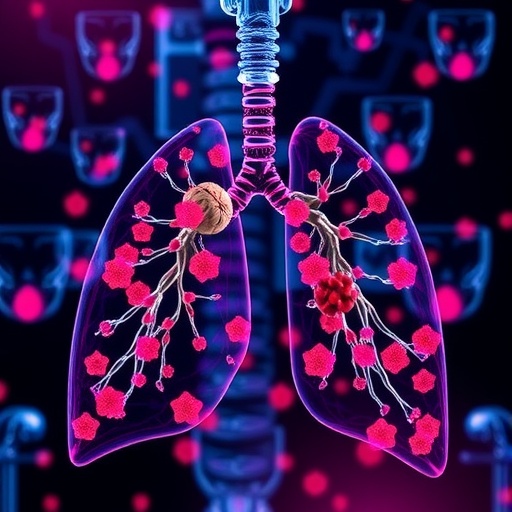In a landmark advancement that could transform pediatric neuro-oncology, researchers at St. Jude Children’s Research Hospital have meticulously analyzed data from nearly 900 children diagnosed with medulloblastoma, one of the most common malignant brain tumors in childhood. By integrating genomic, molecular, and clinical survival data from three major clinical trials, the team developed a novel risk stratification framework that offers the potential to significantly reduce the intensity of treatment in a large subset of patients, thereby mitigating the long-term debilitating side effects currently associated with conventional therapies.
Medulloblastoma treatment traditionally involves a combination of craniospinal radiation and chemotherapy. While these treatments have substantially increased survival rates over the past several decades, they are notorious for their toxicity, particularly in the pediatric population whose developing brains and bodies are vulnerable to adverse late effects. The challenge has been to balance effective tumor eradication with minimizing harmful treatment-related morbidities. This new approach spearheaded by Giles Robinson, MD, and colleagues addresses this challenge by harnessing detailed molecular profiling to tailor therapy intensity precisely according to individual tumor biology.
Through comprehensive analysis, the research unveiled new subgroups within the medulloblastoma molecular landscape that predict patients’ responsiveness to therapy. Specifically, tumors classified under groups G3 and G4, the two most prevalent molecular categories, were further parsed based on chromosomal alterations, methylation profiles, and oncogene amplifications such as MYC. This multifaceted classification led to the identification of four distinct, actionable risk categories. These categories serve as a guide to calibrate therapeutic intensity, ensuring that up to 40% of children with medulloblastoma could receive lower doses of craniospinal radiation and decreased chemotherapy exposure without compromising survival rates.
This paradigm shift underscores the heterogeneity intrinsic to medulloblastoma tumors, clarifying which patients can be spared from overtreatment and which require aggressive intervention. Such precision medicine approaches not only enhance patient quality of life but also reduce the burden on healthcare systems by avoiding unnecessary toxicities. Robinson’s group is planning to clinically validate this stratification system in upcoming trials, which is facilitated by a cutting-edge computational platform developed concurrently by Xin Zhou, PhD, and his team.
The newly created Medulloblastoma Meta-Analysis (MB-meta) Portal represents a quantum leap in how molecular and clinical data can be accessed and interpreted. This user-friendly web tool allows clinicians and researchers to input various demographic, clinical, and molecular parameters to generate predictive survival curves for patient subsets. By transforming complex multi-omic datasets into intuitive visual analytics, the portal democratizes access to crucial data, enabling evidence-based decision-making and fostering further research.
Beyond clinical utility, the portal helped elucidate novel insights into medulloblastoma pathogenesis. For instance, investigation into mutations in the KBTBD4 gene revealed unexpected subgroups associated with distinct molecular signatures and survival outcomes. These findings hint at previously unappreciated biological pathways that drive tumor behavior, opening new avenues for therapeutic intervention targeting these genetic aberrations.
From a translational standpoint, the St. Jude teams’ integrative approach exemplifies the confluence of molecular biology, computational analytics, and clinical oncology. By harmonizing data across different trial protocols and molecular platforms, they achieved unprecedented granularity in understanding tumor heterogeneity. This effort highlights the importance of data sharing and collaborative science in overcoming the limitations of smaller, isolated studies that have historically hampered progress in the field.
The implications of this research extend far beyond medulloblastoma. It sets a template for how pediatric and adult cancers can be dissected using longitudinal and multi-dimensional data integration to personalize treatment. Particularly noteworthy is the portal’s capacity for “point-and-click” functionality, allowing users without extensive bioinformatics training to harness complex genomic datasets, thereby accelerating hypothesis generation and clinical translation.
A significant benefit of reducing therapy intensity lies in minimizing lifelong side effects such as cognitive deficits, endocrinopathies, and secondary malignancies, which plague many survivors of childhood brain tumors. By steering away from the “one-size-fits-all” approach, the proposed risk-adapted therapies promise improved post-treatment quality of life, thus addressing a critical unmet need in pediatric oncology survivorship care.
This breakthrough emerges in the context of St. Jude’s longstanding commitment to childhood cancer research. Their efforts have historically propelled survival rates from a mere 20% in the mid-20th century to approximately 80% today for many pediatric cancers. The continuous refinement of molecular diagnostics and tailored therapies epitomizes St. Jude’s mission to not only cure childhood cancers but also to ensure that survivors live full, healthy lives.
As the scientific community embraces this stratification and the associated portal, it is anticipated that a ripple effect will ensue, inspiring further innovation in molecular classification systems and therapeutic de-escalation strategies. The accessibility and transparency of these datasets encourage collaborative validation and potentially rapid incorporation into clinical practice globally.
In conclusion, the integration of molecular genomics with clinical trial data by St. Jude researchers heralds a new era in medulloblastoma treatment. By enabling personalized therapy that prioritizes both survival and long-term wellbeing, the studies published in Neuro-Oncology and Cancer Research significantly advance pediatric neuro-oncology. The Medulloblastoma Meta-Analysis Portal not only serves as a decision-support tool but also as a beacon for future research, catalyzing discoveries that may revolutionize how childhood brain tumors are treated. Physicians, scientists, and families alike can now look forward to more refined, less toxic treatment regimens informed by robust, accessible data.
Subject of Research: Personalized treatment risk stratification and outcome prediction in pediatric medulloblastoma through integrated clinical and molecular data analysis.
Article Title: Data-driven risk stratification guides childhood brain tumor treatment, reducing side effects
News Publication Date: November 5, 2025
Web References:
Medulloblastoma Meta-Analysis (MB-meta) Portal: https://proteinpaint.stjude.org/mbportal/
St. Jude Children’s Research Hospital: https://www.stjude.org/
References:
DOI for Cancer Research article: 10.1158/0008-5472.CAN-24-4976
Image Credits: St. Jude Children’s Research Hospital
Keywords: Medulloblastoma, Toxicity, Cancer treatments, Pediatric neuro-oncology, Risk stratification, Genomic profiling, Molecular classification, Survivorship, Precision medicine, Computational biology
Tags: advances in neuro-oncology researchchildhood brain tumor therapyclinical trials in pediatric brain cancerdata-driven risk stratificationgenomic profiling in pediatric oncologylong-term effects of cancer treatmentmedulloblastoma treatment optimizationminimizing side effects in cancer treatmentmolecular subgroups in brain tumorspersonalized medicine for pediatric patientsreducing treatment intensity for childrentherapeutic approaches for medulloblastoma





